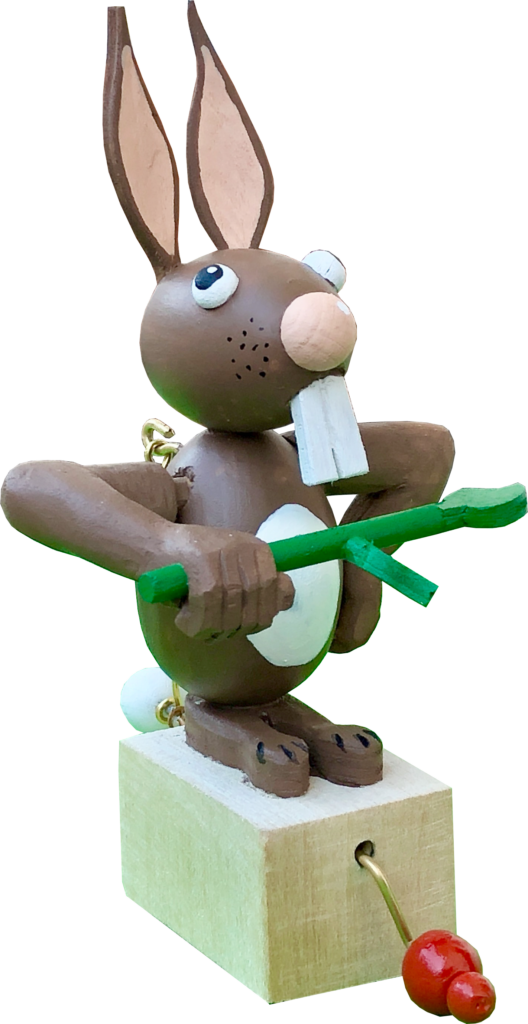
What was the plan?
I recently watched a friend brush her daughter’s teeth before putting her to bed and I wondered how rabbits set about this mundane task. I mean they have very visible teeth which they must be quite proud of and they can’t pop around to the shops to buy a toothbrush. I have never asked a rabbit, but I am guessing that they might use a bit of brushwood as they live a healthy outdoor life.
The rabbit
Two wooden eggs basically make up the rabbit’s body and its head. 3 mm plywood serves to make the teeth and ears. A piece of 5 mm dowel joins the rabbit’s head to its body.
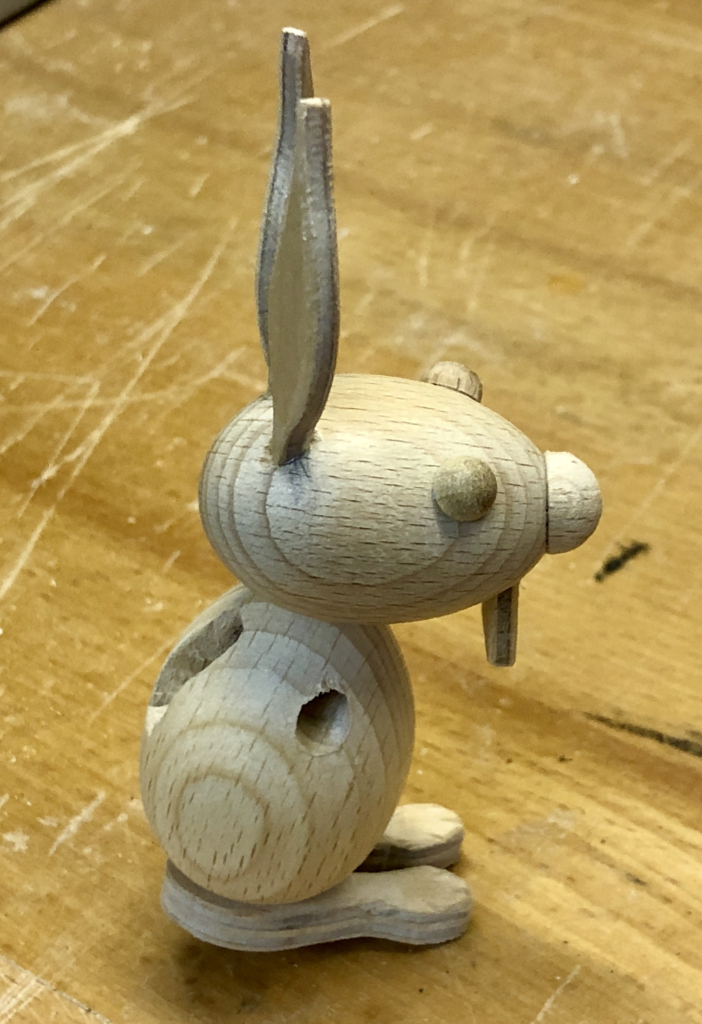
A through hole, drilled sideways through the body, loosely accommodates a piece of 4 mm dowel to which the rabbit’s right arm will be attached. A slot cut in the rabbit’s back allows a brass lever to be inserted into the dowel to rotate it a little.
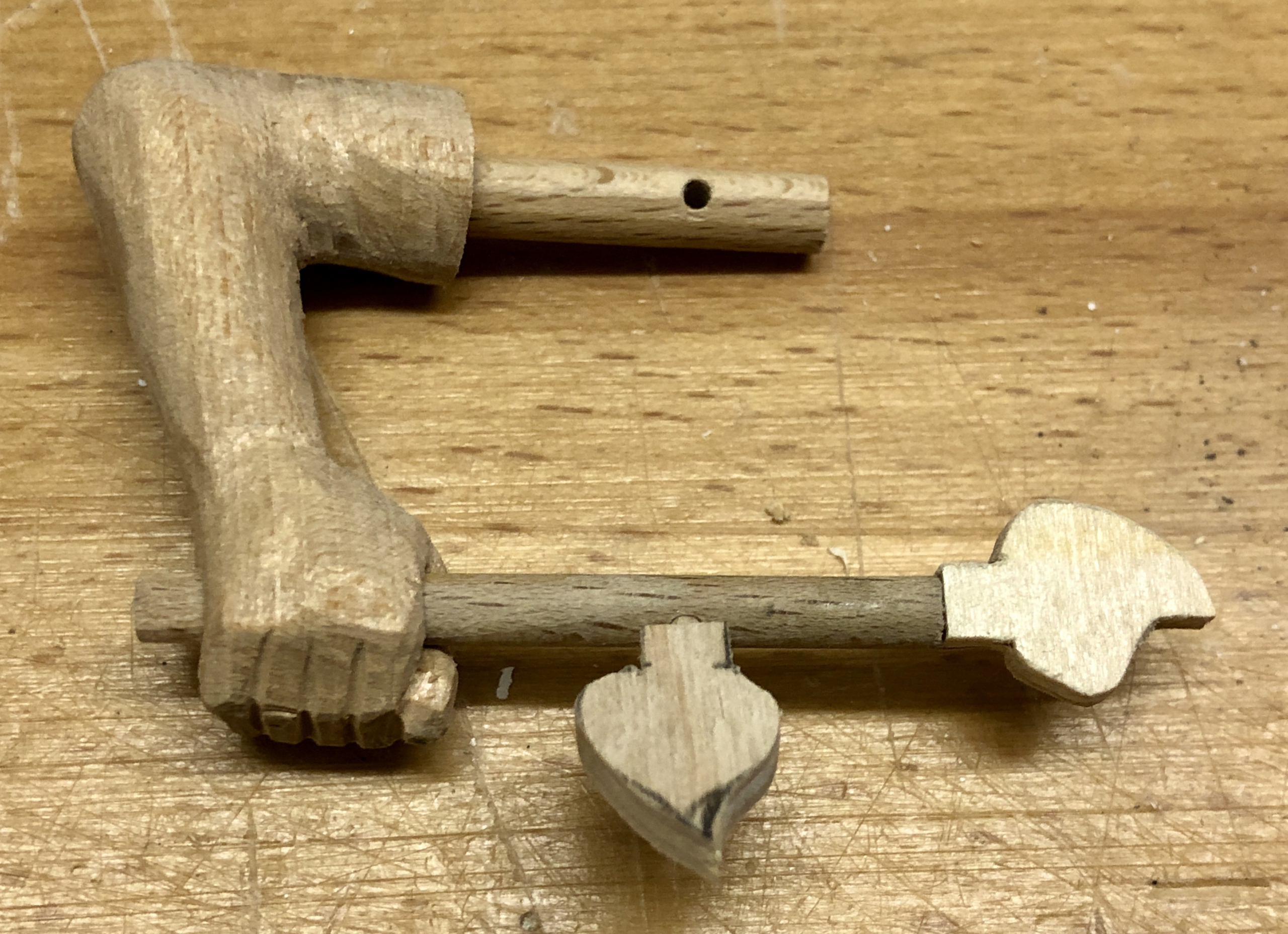
The angle of the arm to the body is important if our brushwood brush is to move correctly in front of the teeth so, before doing any carving, I checked that the angles were correct with a very rough arm.
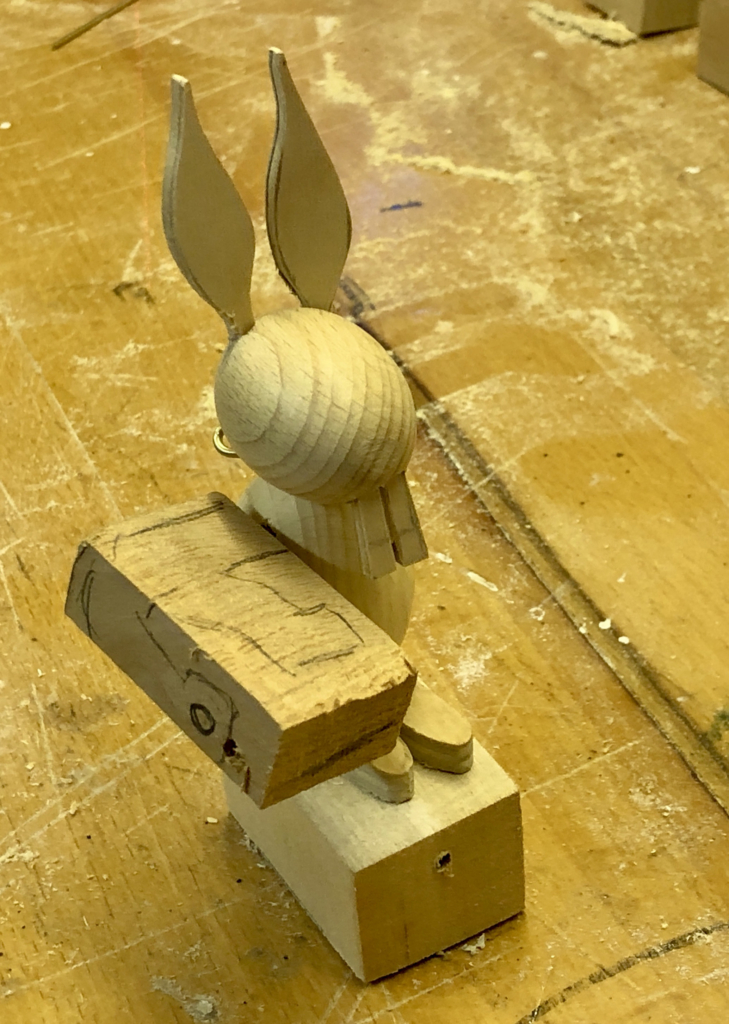
Once the angles are OK, it’s safe to cut the arm roughly to shape before starting to carve.
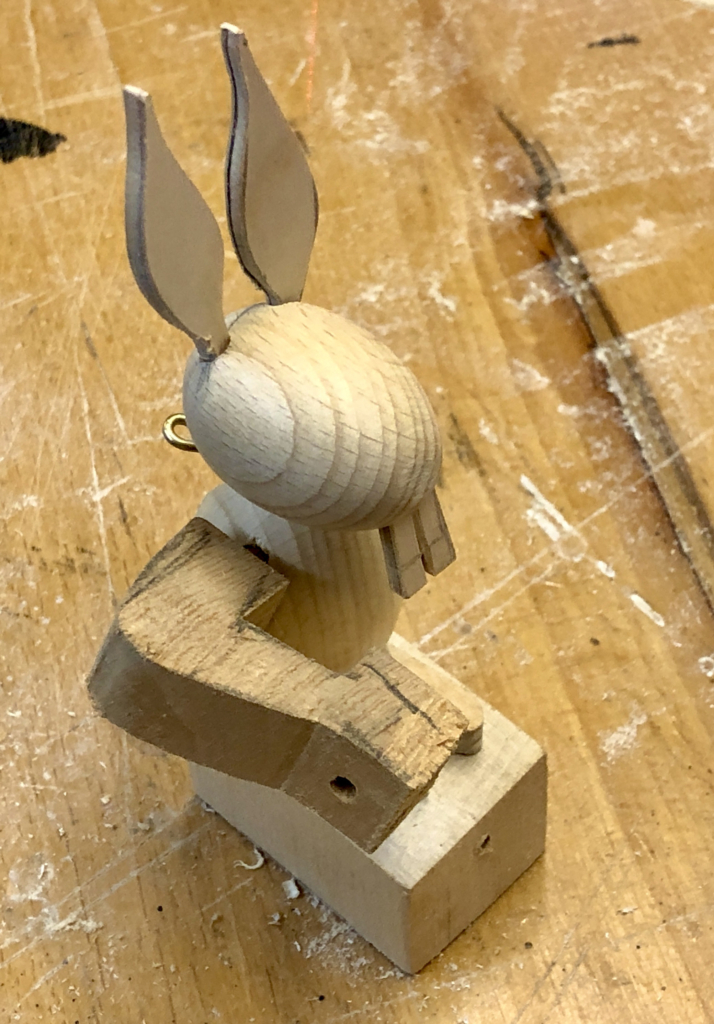
The base is a simple rectangular block with a through hole from front to back for the crank to turn easily and a hole for some dowel to attach the rabbit to its base.
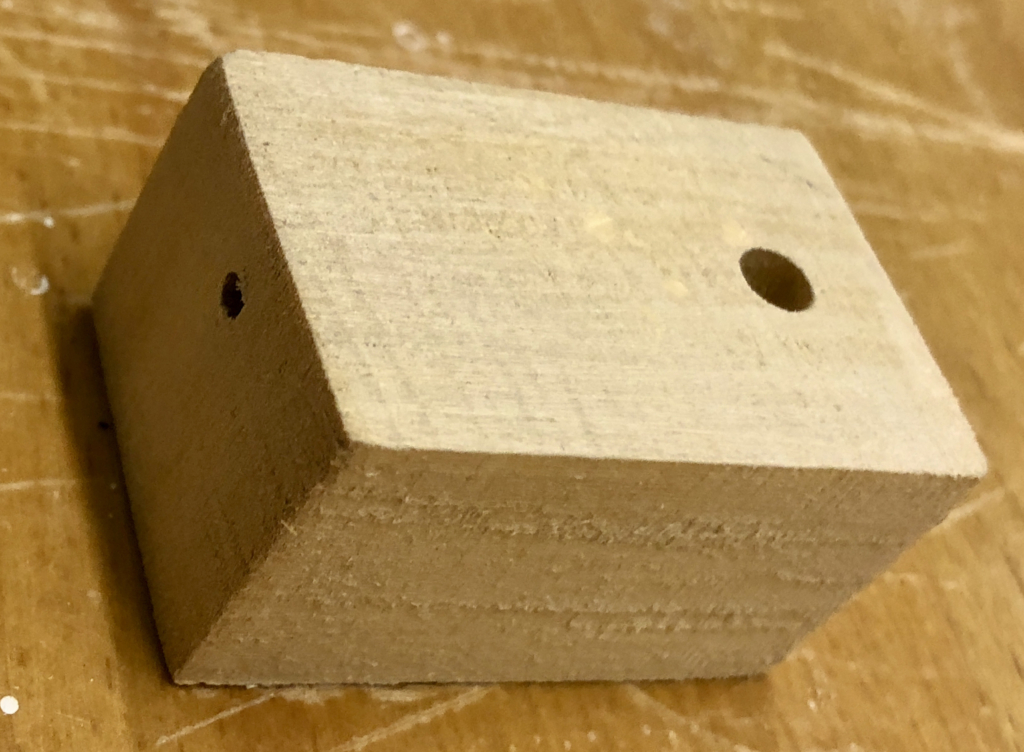
Once the rabbit was largely assembled I glued a piece of brass rod into the horizontal dowel to move the rabbit’s right arm up and down. Another piece of brass rod passes through the base and I bent this into a crank. When the crank is at the top of its movement, the arm is down, when the crank is at the bottom of its movement, the arm is up. A certain amount of experimentation is needed to get the crank dimensions just right.
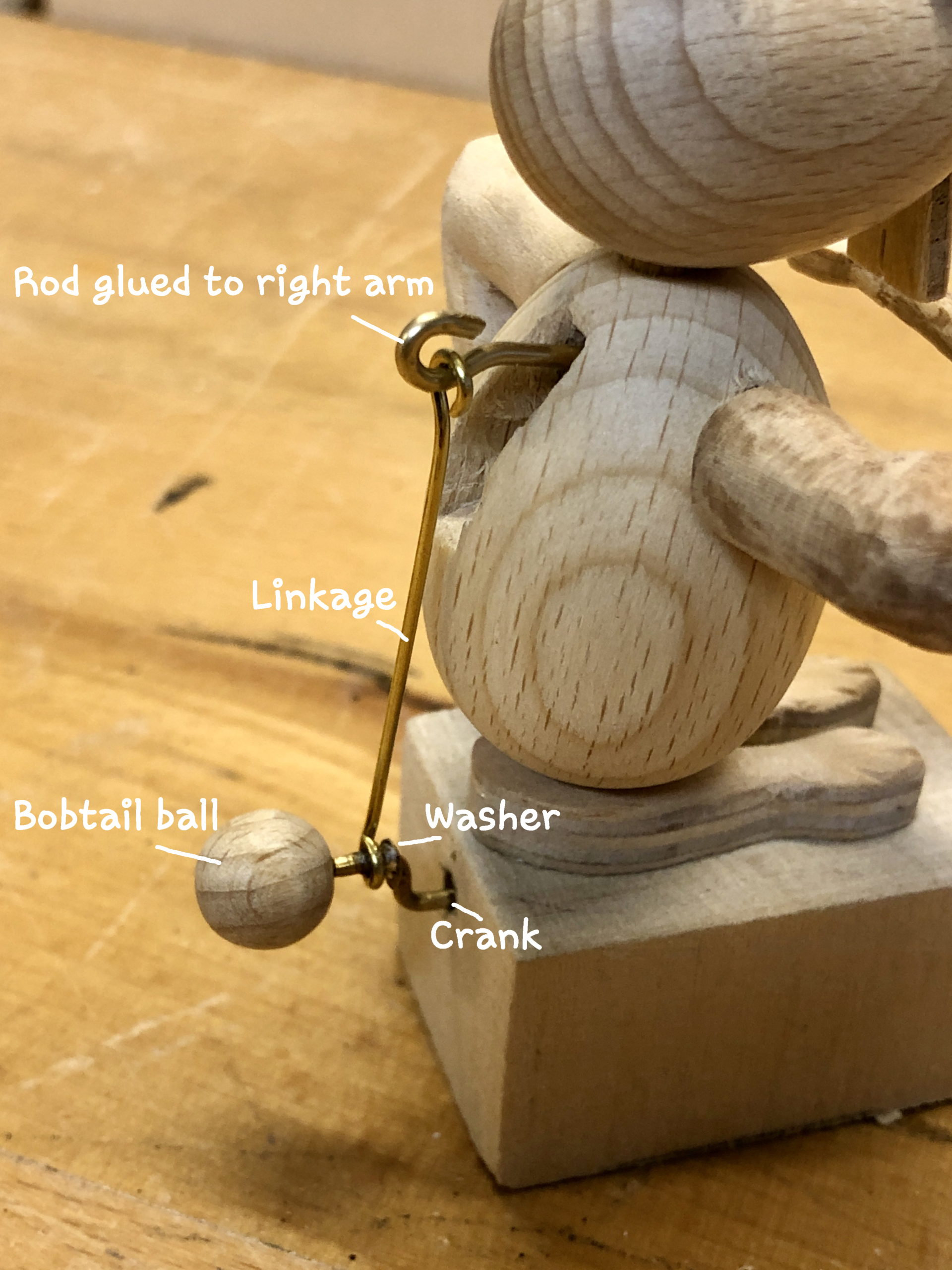
If you look closely, you can see that I soldered a small washer onto the crank to keep the vertical linkage on the horizontal part of the crank and to prevent it from slipping down towards the base. A wooden ball glued in place prevents the linkage from slipping off backwards, away from the base. When painted white this suggests a bobtail for our rabbit.
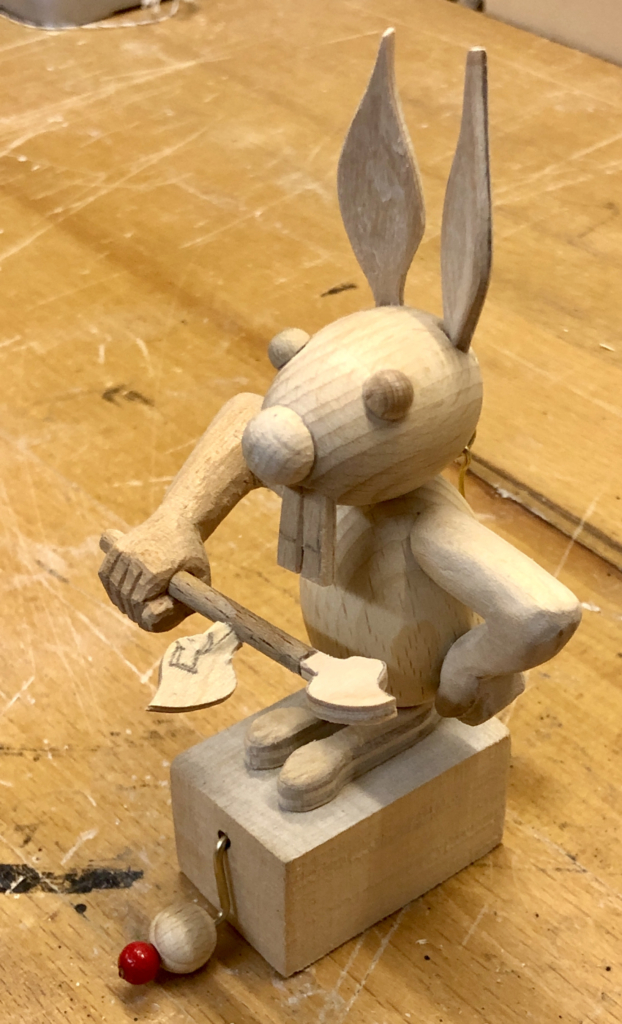
The front part of the crank has two balls, a small one which is glued in place to retain the larger, free-turning ball. Grabbing this larger ball allows you to rotate the crank endlessly, without having to let go. The rabbit’s left arm doesn’t move and is glued in place, covering up the end of the hole containing the horizontal dowel. The toothbrush is a piece of dowel with two token leaves attached. This rabbit has long, rabbity feet but its legs are left to your imagination as an unnecessary complication.
Final thoughts
The finished bunny is quite small, about 13 cm high and its mechanism is extremely easy to operate. Some of my larger creations can be quite stiff to use, especially for children. It was fairly quick to make apart from the carving. I enjoy taking my time when carving, making hands with fingers and thumbs always takes a while (my rabbit has fairly human hands). With no explanation, adults find it hard to understand what is going on here. I considered writing the title “How do rabbits brush their teeth” on the side for English-speaking adults but have decided against it. Mysteries are an interesting part of life.
Video
Link https://www.youtube.com/watch?v=BnuVdt2vj50